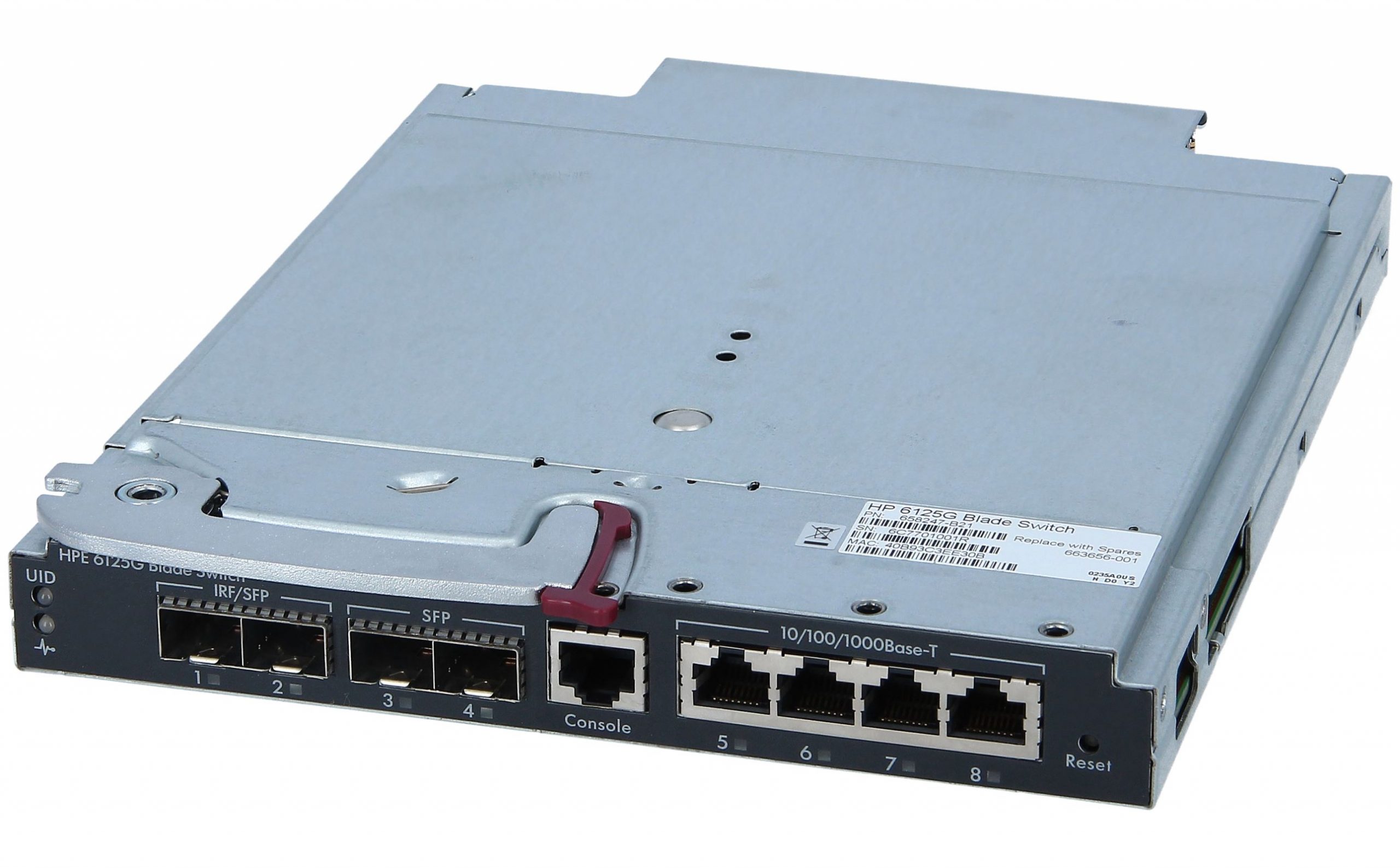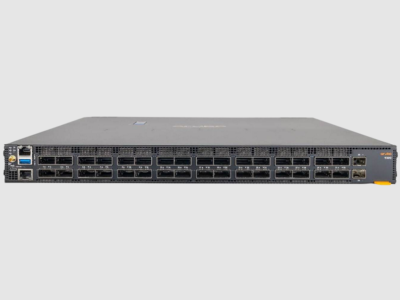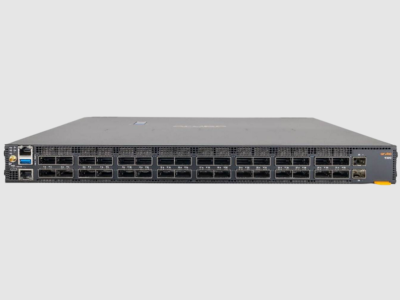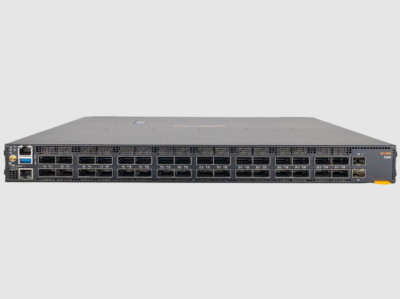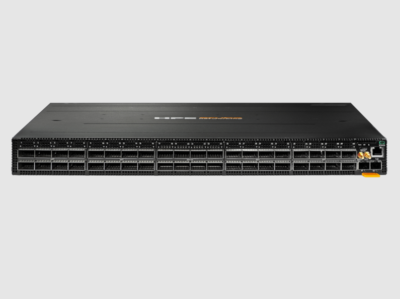HP 6125G Ethernet Blade Switch 658247-B21
Part Number: 658247-B21
HPE 6125G Ethernet Blade Switch
The innovative features of HPE Networking products are now available in a 1Gb blade switch designed exclusively for the c-Class BladeSystem enclosure. The HPE 6125G is designed specifically for budget-conscious customers who require 1Gb switching and routing. HPE 6125G basic functionality includes the resiliency of IRF (intelligent Resilient Networking) stacking and the stability of Comware features previously only available on much higher end switching products. With sixteen 1Gb downlink (server) ports, up to eight 1Gb uplink ports, up to two 10Gb IRF stacking ports, and one 10Gb cross-link port, the HPE 6125G reduces costs while increasing datacenter efficiency and capability. Using IRF, HPE 6125G and HPE 6125G/XG switches can be combined together at the enclosure, rack or datacenter level into a single virtual switch and managed through a single IP address for powerful mixed bandwidth applications. The HPE resilient Comware operating system provides a common level of features, service and security levels from edge to core. And all network elements can be managed through IMC (Intelligent Management Center) providing comprehensive single pane provisioning of the entire network. The HPE 6125G is perfect for remote office applications, clustering, virtual machine applications or wherever IPv6, full layer 3 routing and distributed trunking are required for 1Gb applications. If you’re looking for a switch that provides ample performance at a low cost, the 6125G is the optimal choice for any data center
Standard Features
Performance
• Non-blocking architecture
• Wire speed switching and IPv4/IPv6 routing on all ports
• Separate 10Gb Internal cross connect between switches
• Combine up to 10 switches into a single virtual switch
• RJ45 and SFP ports support 1Gb
• Ports 1 and 2 can be used as 1Gb SFP uplinks or as 10Gb IRF connections
• Mix any combination of HPE 6125G and HP6125G/XG in a single IRF domain
• Store and Forward Switching
• Hardware-based wire-speed access control lists (ACLs)
Management
• Remote configuration and management through Web browser or CLI
• Secure Web-based management through HTTPS
• Standards based SNMP management via SNMPv1, v2c and v3
• OOBM via Onboard Administrator
• GUI Management via Intelligent Management Center
• RJ45 console port
• sFlow and RMON network monitoring
• Manager and operator privilege levels
• Command authorization via RADIUS
• Complete session logging for problem resolution
• LLDP Discovery protocol
• IPv6 management
• Dual flash images
• Multiple configuration files
• Syslog
• Network Time Protocol (NTP)

